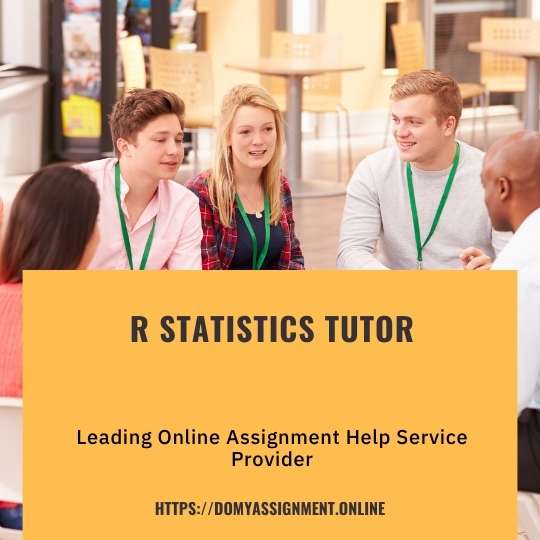When choosing between statistics packages, one of the most common decision points is R vs SPSS. However, while there are clear advantages and disadvantages to each program, the decision isn’t as clear-cut as you might think. On one hand, SPSS allows you to analyze your data without having to write any code whatsoever; on the other hand, R has a vast array of statistical functions that SPSS doesn’t have. But which stats package should you use?

R Statistics Tutor: How to Use R for Data Analysis
Data analysis and business intelligence have become increasingly important, but learning how to do them well can be tough. Fortunately, there are plenty of resources to help you learn how to use R for data analysis. With the right books and online resources, you can learn the tools you need to make your own predictions and insights or become an expert at helping others with their data analysis needs. The following guide will show you everything you need to know about using R statistics software to support your data analysis goals.
Introduction
Are you looking for a tutor to help you learn R? R is a programming language and software environment that is popular among statisticians and data analysts. It is used for statistical computing and graphics. In this blog post, we will give you an overview of how to use R for data analysis. We will cover topics such as installing R, loading data, and performing basic statistical analyses. By the end of this post, you should have a good understanding of how to use R for your own data analysis projects.
Getting Started With R
If you’re just getting started with R, the first thing you need to do is install it. You can download the latest version of R from the CRAN website. Once you have R installed, you’ll need to set up a development environment. I recommend using RStudio. It’s a free and open source IDE that makes working with R a lot easier. Finally, you’ll need to install some packages. The best way to do this is through the install.packages() function.
Reading, Writing And Manipulating Data
The basic data types in R are vectors, matrices, lists, data frames, and factors. In order to read in data from a file, the file must be in a format that R can understand. The most common formats are .csv (comma-separated values) and .txt (text files). To read in a .csv file, use the read.csv() function; to read in a .txt file, use the read.table() function.
Descriptive Statistics
R is a programming language and software environment for statistical computing and graphics. It is used by statisticians and data scientists for data analysis, statistical modeling, and data visualization. In this blog post, we will show you how to use R for descriptive statistics.
Probability Distributions
One of the first things you need to understand when using R is probability distributions. This is because many statistical tests assume that your data follow a certain type of distribution. The most common distributions are the normal, t, and chi-squared distributions.
Online Statistics Tutor

If you’re looking for an online statistics tutor, look no further than R! R is a powerful statistical programming language that can be used for everything from data analysis to machine learning. Plus, there are tons of free resources online that can help you get started.
Here are a few tips on how to use R for data analysis:
1. First, install R and RStudio on your computer.
2. Next, open RStudio and create a new project.
• R Statistics Tutor: Learn the tools you need to do data analysis
• R Statistics Tutor gives you everything you need to know about data analysis
• Become an expert at helping others with their data analysis needs
• With the right books and online resources, you can learn how to use R for data analysis
======
• How to use R for data analysis
• Become an expert in data analysis
• Learn from the experts
• Explore the resources we have collected
======
• How to use R Statistics software for data analysis
• Master data analysis and become an expert
• Comprehensive guide to using R Statistics for data analysis
• Top rated Data Analysis resource
R Statistics Help

1. R is a programming language and software environment for statistical computing and graphics.
2. The R language is widely used among statisticians and data miners for developing statistical software and data analysis.
3. R is free and open source software, meaning that anyone can use it and contribute to its development.
4. Getting started with R can be daunting, but there are many resources available to help you learn the basics.
R Tutorial
R is a programming language and software environment for statistical computing and graphics. The R language is widely used among statisticians and data miners for developing statistical software and data analysis. In this tutorial, we will show you how to use R for data analysis.
R is a free and open source software. You can download the latest version of R from the CRAN website.
R Tutors Online
Whether you’re a beginner or an experienced R user, a tutor can help you learn how to use R for data analysis. There are a number of online tutors available, each with their own strengths and weaknesses. To find the right tutor for you, it’s important to know what you’re looking for in a tutor.
Top 10 Online Resources to Learn How to Code
R Programming Tutors Near Me

If you’re looking for an R programming tutor, there are a few things you should keep in mind.
First, make sure that the tutor is experienced and knowledgeable in the subject matter.
Second, make sure they’re able to communicate clearly and effectively.
Third, make sure they’re able to tailor their teaching methods to your learning style.
Fourth, make sure they’re affordable. And fifth, make sure they’re located near you.
FAQ
- What are the main features of R?
R is a powerful statistical programming language that can be used for data analysis and visualization. Some of the main features of R include its ability to handle large data sets, its wide range of statistical functions, and its flexibility. Additionally, R is free and open source, making it accessible to everyone.
- What are the limitations of R?
There are several potential limitations of using R for data analysis.
First, R is a programming language, so it can be difficult to learn if you don't have any coding experience.
Second, R can be slow when working with large datasets.
Third, some features that are available in other statistical software packages are not available in R.
Fourth, R is not always the most accurate statistical software package.
Finally, R is not always user-friendly and can be difficult to use for those who are not familiar with coding. - What are the benefits of using R?
There are many benefits of using R for data analysis.
First, R is a free and open-source software which means anyone can use it.
Second, R is versatile and can be used for a wide variety of statistical analyses.
Third, R is supported by a large and active community of users which means there is a wealth of resources available if you need help.
Fourth, R is easy to learn for beginners and has lots of features that more experienced users will find useful.
